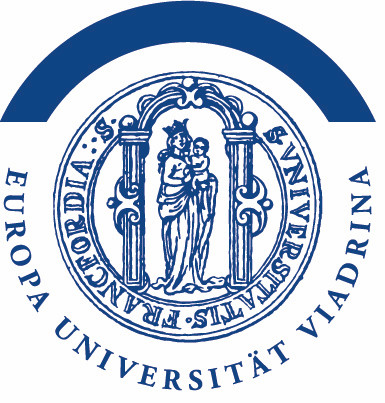
|

|
Edited by Konstanze Jungbluth, Cornelia Müller, Nicole Richter, Hartmut Schröder
|
Narrating migration: a comprehensive and dynamic approach of social representations Débora Amaral da Costa. 2018. Identities of Migration. A Narrative-based Approach to the Studies of Social Representation. Berlin: Peter Lang.
This publication presents the research conducted by the author during her PhD, that she pursued within two institutions—the Federal Fluminense University (Niterói, Brazil) and the European University Viadrina (Frankfurt an der Oder, Germany)—thanks to the PROBRAL cotutelle program. This was funded by CAPES (Coordenação de Aperfeiçoamento de Pessoal de Nível Superior) and DAAD (Deutscher Akademischer Austauschdienst), between 2016 and 2018, hosted by the research project Ethnicity in Motion, which aims to investigate the trans-culturalization processes amongst immigrant communities in Brazil. In this work, Débora Amaral da Costa studied the Haitian community in Rio de Janeiro. She offers an analysis on social representations of this community by using a narrative-based approach, grounded on an interdisciplinary perspective. The objectives of the study are to analyze how identities are constructed/negotiated through narratives of migration and to identify the immigrant’s representations of the host country before and after their migration. Another declared goal of the research is to provide a new methodology for the analysis of social representations in the context of migration. The narratives are useful to demonstrate how representations can change and relate to the dynamic process of identity construction through discourse. When subjects give accounts of their experiences, they give new meanings to their stories based both in primary representations created in their communities, as in secondary representations, made up from identities they choose to emphasize in their interlocutor. (p. 22) Chapter 2 offers an overview of the sociohistorical and linguistic context of the Haitian immigration population in Rio de Janeiro, encouraged after Brazil issued humanitarian visas to Haitians following the 2010 earthquake, in a context when Brazil needed more workforce to prepare the Olympic games. The author also analyzes the function of each language used by |
|
the immigrant, namely Haitian Creole, Portuguese, and French. The next two chapters, 3 and 4, provide a deeper understanding of the theoretical background used by the author to support the research. The author demonstrates a very pertinent appeal to interdisciplinarity, using references from a wide range of disciplines. In Chapter 3, she focuses more specifically on theories of international migrations, giving all its value to extralinguistic factors in the study of representations. Chapter 4, for its part, inspects the concept of sociolinguistic representations, “symbolic formations of reality, both broadly and narrowly, to the languages” (p. 56), as well as the one of identity, a "mosaic of symbols that individuals associate with themselves to mark a position of resemblance to members of their group and to differentiate them from others" (p. 60). Rightly, the author constantly reminds the reader of the fluidity of such concepts. In this chapter, she also introduces some references on the use of cross-genre narratives, a point we will examine further with more detail. The fifth chapter presents the methodology more carefully, based on ethnographic techniques—mainly in-depth interviews and participant observations carried out in various contexts over the course of more than three years. Ten people were interviewed. One original aspect of the research is that some interviews were led in-person, while others occurred through the use of WhatsApp. We will go into more detail regarding this point.
Chapters 6 and 7 provide detailed analyses of the data. Chapter 6 in particular offers an analysis of the dynamics of migration, focusing more on extralinguistic aspects, i.e., on how the migration network of Haitians in Rio de Janeiro works. Chapter 7 focuses on the representations of the migrations. It is the largest and most significant chapter of the book, in which the author analyses primary and counter representations, as well as, to name a few points, linguistics representations and representations of the Other (that is, of the Brazilians). The main asset of this chapter is to show that representations are moving objects which are always likely to be reshaped. As the author states: “[…] the representations are dynamic, fluid and collectively constructed in the discourses. In other words, they are as unstable as the discourses, which are conveyed by society, and thus liable to re-readings and contradictions” (p. 185). The eighth chapter is a small one, but of great interest. It focuses more specifically on the “frames, forgetfulness and silences as spaces of the construction of identities” (title) and we will later show that it constitutes one of the strengths of the book. The ninth and final chapter is the concluding chapter, in which the author offers further methodological perspectives, a goal she had announced at the beginning. |
|
From our point of view, this last chapter constitutes the weakest point of the book. Indeed, at the beginning of the book, the author sets an explicit goal to “propose a new methodology for the analysis of social representations in the context of migration” (p. 26). It is an ambitious goal, and it was even part of title of the original thesis in portuguese (Negociação de identidades e formação de novas representações sociais em narrativas de migração: uma proposta metodológica). However, it occupies only six pages of the whole book and we believe that this chapter would have deserved more attention, for it sketches interesting analysis perspectives. The author proposes a model of analysis for representations based on their function. She distinguishes three types of functions of representations: ideological, social, and communicative. This seems a fruitful and promising model, but it could have been further developed and the reader is left a bit frustrated. |
|
migration, in which language is only one of the aspects, and that makes her analysis so deep and complete. DOI: 10.11584/pragrev.2020.8.1.2 |